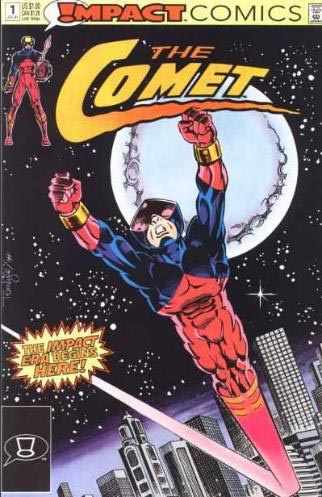The other historically significant superhero debuting together with The Shield. Despite being even less known, he has a much bigger hallmark to his name.
Pep Comics #1 (1940)
by Jack Cole
It’s possible Jack Cole only did the artwork; this is three years before he’ll create the FAR more popular Plastic Man.
But for now, we have The Comet.

Pep Comics was really big into using infodumps for its superhero origins, isn’t it? At least this one features SOME artwork with it.
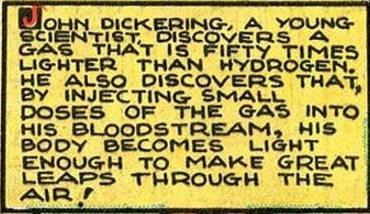
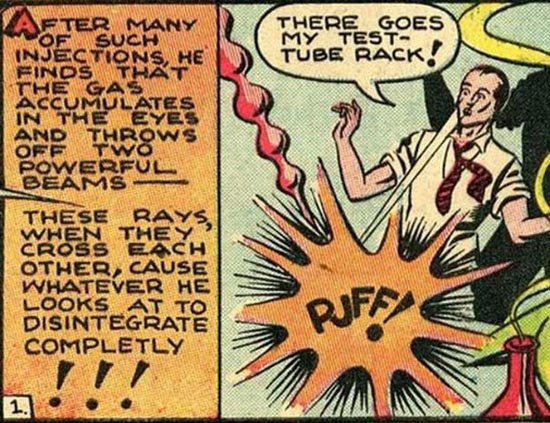
Predating Cylcops by 23 years, The Comet has to use a visor to control his deadly eye blasts.
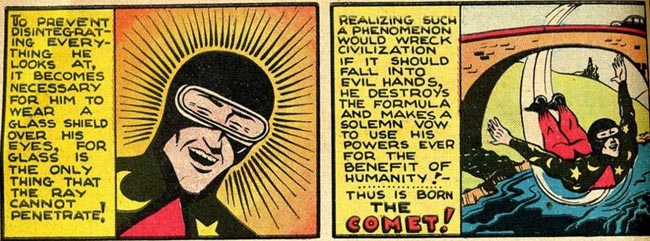
This is basically yet another racketeering story… but it has the distinction of involving GERM WARFARE!!!
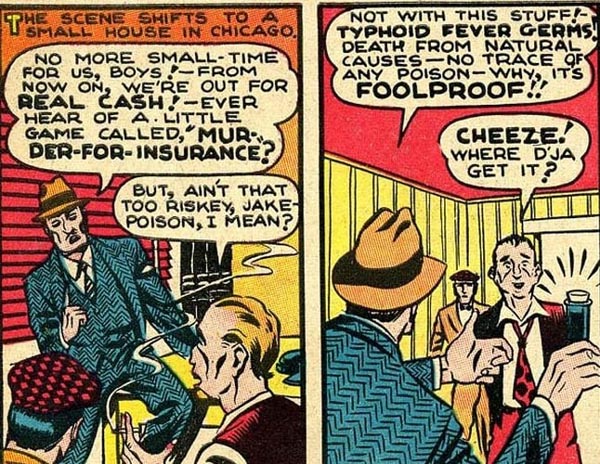
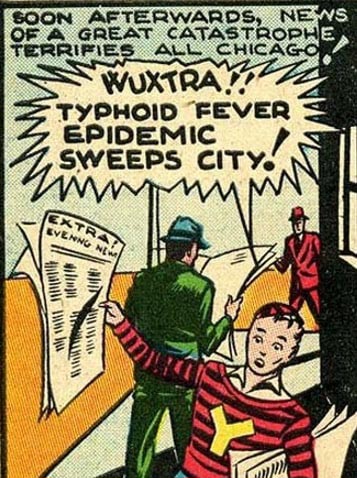
The Comet is called to help, and he wastes no time flying to Chicago to beat up the criminals.

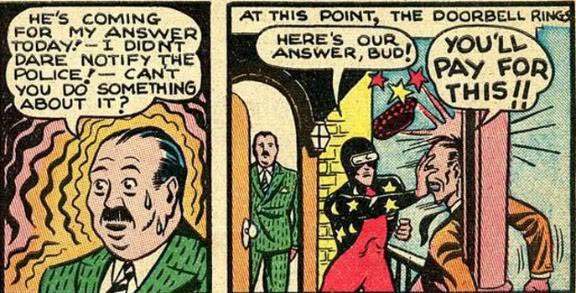
The Comet flies so fast he crashes the panel! VERY unusual creative choice for the Golden Age.

He’s also so ruthless that he DISINTEGRATES THE HOUSE where the criminals were staying!!!
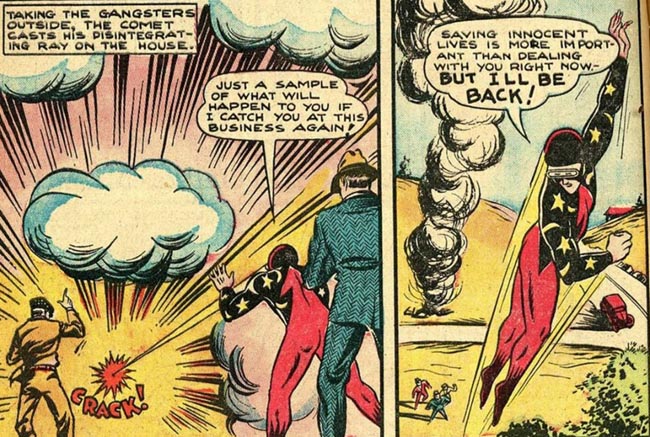
Well… not all of it. The Comet might have one of the lamest superhero weaknesses… his blasts don’t work on GLASS.
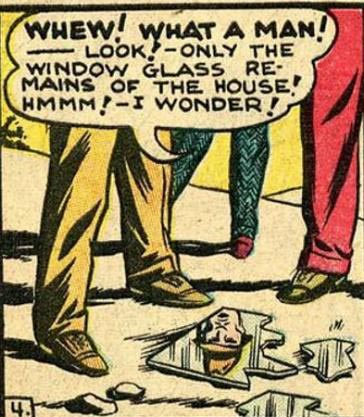
Before blowing up the house he was able to get a list of all the people who purchased the germs from the criminals, so he goes around the city to prevent more murders.
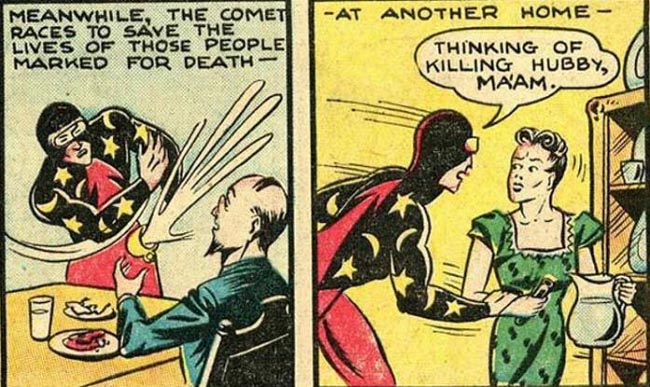
Until he catches the guy selling them so that he can DISINTEGRATE HIM IN COLD BLOOD.
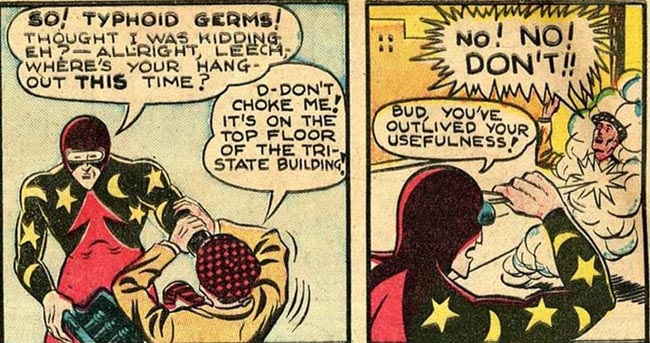
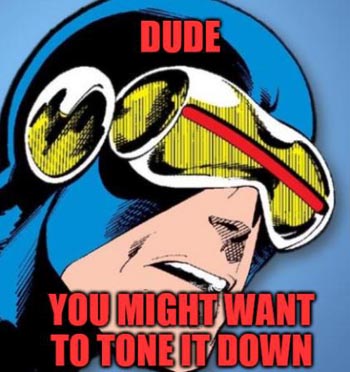
The Comet has been unstoppable so far, but remember he has a dumb weakness.
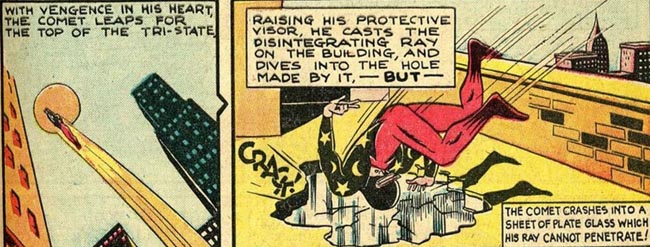
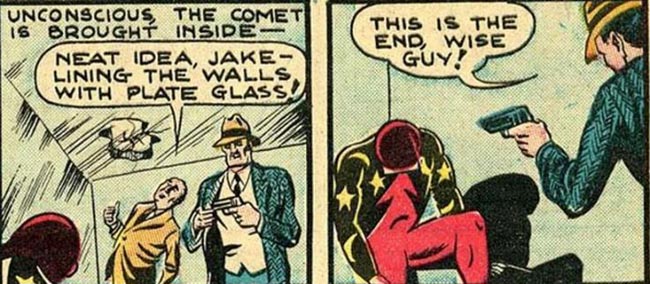
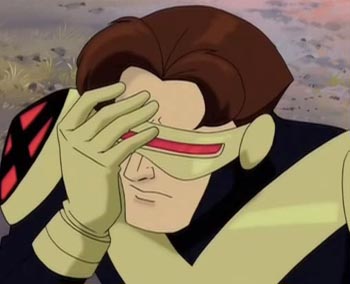
Don’t worry about The Comet, though, he’s still perfectly capable of DISINTEGRATE HIS TARGETS AS THEY SCREAM IN TERROR.

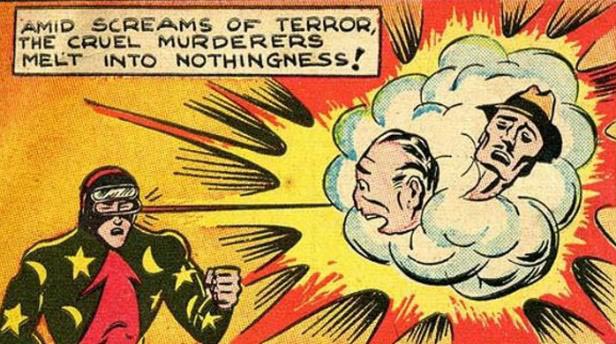

And so we end with The Comet solving the case the only way he seems able to solve anything: MORE MURDER!!!
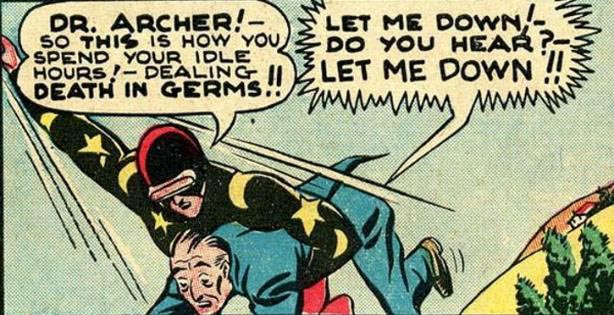
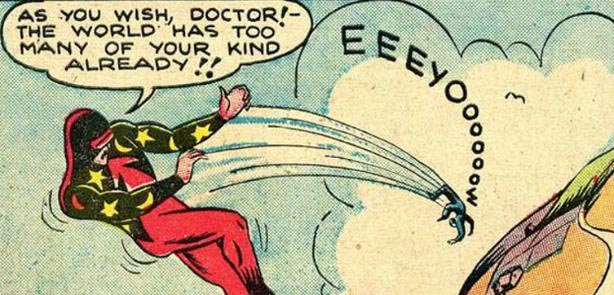
Seriously, he murders AT LEAST four people in his first story alone! Probably more.
In addition to The Shield and The Comet, there are other stories. To give an idea of where we are in history, the first war stories are popping up.
And of course you can’t escape Flash Gordon ripoffs.
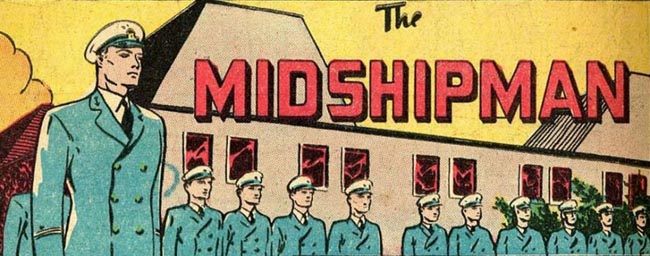

And the Fu Manchu ripoffs, although the premise looks more like Yellow Claw considering the actual protagonist is a Chinese man living in America.
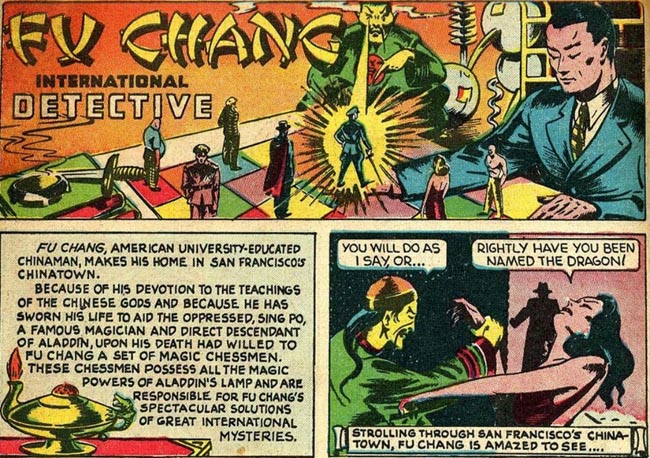
Basically every 40s genre is present on Pep Comics #1: superheroes, war stories, science fiction, adventure, “funny animals”, detective stories, sport stories…
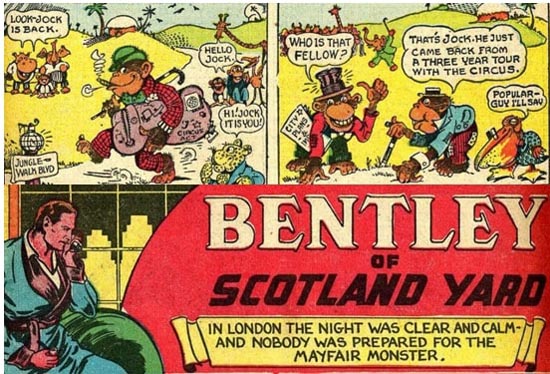
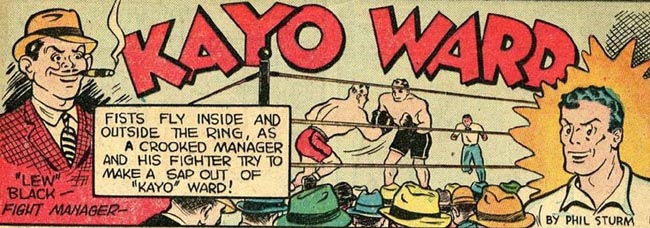
…and The Press Guardian, “otherwise known as the Falcon”, who is only historically significant for having one of the worst costumes EVER.

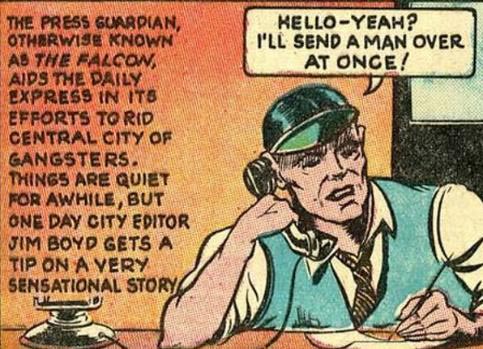
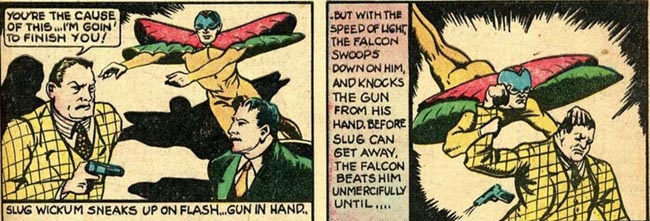
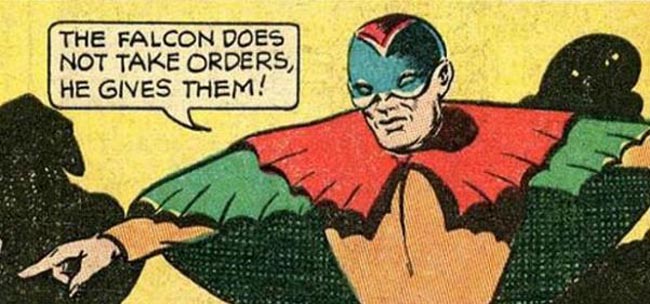
Say what you will about the quality of Pep Comics, but they sure delivered in quantity.
Historical significance: 0/10
More below on why The Comet is significant, but this story? Not so much.
Silver Age-ness: 0/MURDER
That is a lot of collateral damage, even by Golden Age standards!!!
Does it stand the test of time? 0/10
At least the artwork has some interesting panels here and there; Jack Cole has a long way to go before he gets his own style. Other than that, The Comet is quite a boring character… he just flies from place to place murdering everyone, in addition to having a rather dumb weakness.
How close is this to the modern character? What modern character?
The Comet’s murder rampage lasts until Pep Comics #17 where HE’S KILLED FOR REAL.
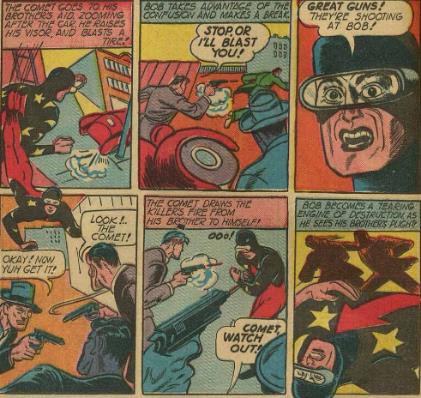
That’s why The Comet is historically significant: he’s the first superhero to be killed, pre-dating Lightning Lad by 23 years!!!
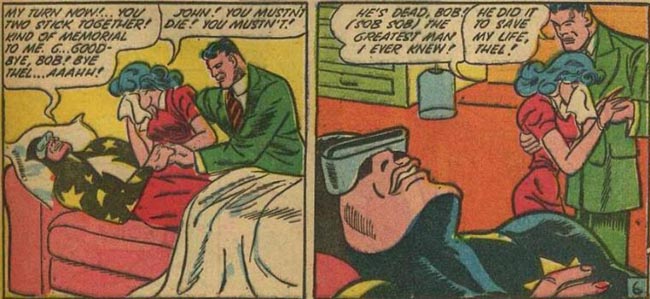
Lightning Lad still has the distinction of having the first “superhero death”, in the sense that he was brought back. Also like Lightning Lad, The Comet has a sibling that wants to continue the family tradition… but instead of becoming a new Comet, his brother becomes The Hangman.
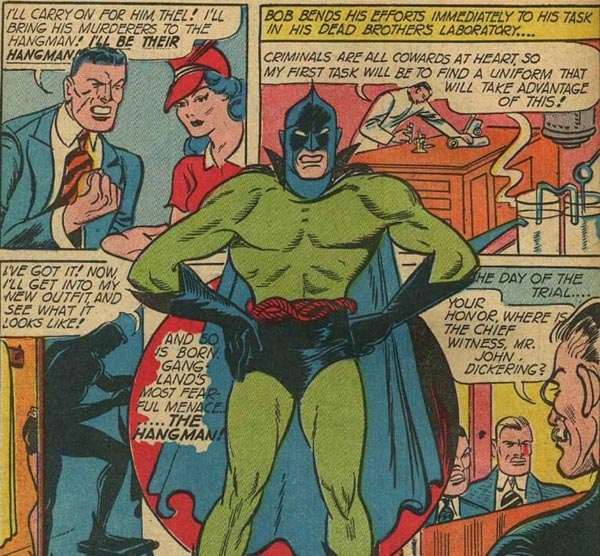
The Hangman proved more successful than his brother, appearing on Pep Comics until #47 and even getting his own series with “Hangman Comics”, lasting 8 issues.
Other than the fact that he succeeded the first superhero to die in action, I don’t think he’s significant enough to go into further detail.
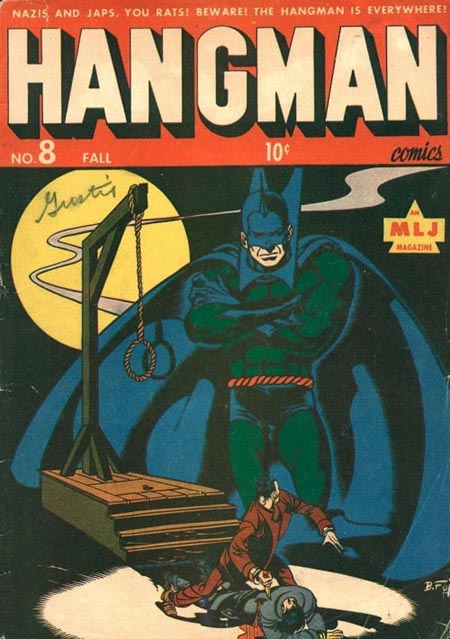
Surprisingly there is a Silver Age version of The Comet, debuting in 1964 on “Adventure of the Fly #30”, where he becomes a love interest for co-star Fly Girl (of all things!).
Other than the name, he doesn’t seem to have anything to do with the original.

This version of The Comet was part of Archie Comics’ only superhero team, the Mighty Crusaders. It never took off, like every other Archie superhero.

The Mighty Crusaders also brought back The Hangman, but he became a villain. Considering the Silver Age Comet is a completely different guy from the Golden Age one, I wonder if this version of Hangman is still the brother of the original Comet.
Then again, I’m probably giving this more thought than the creators.

If you’ve ever felt what would happen if poor Jerry Siegel was forced by his editors to ape Stan Lee’s style… and you want to really hurt yourself… read the Mighty Crusaders.
I will eventually talk about The Fly, but I’m staying clear of this stuff.
Even I have limits.

As for The Comet, some versions of the character pop up from time to time. The fact that his original stories are PROBABLY in the public domain helps.
